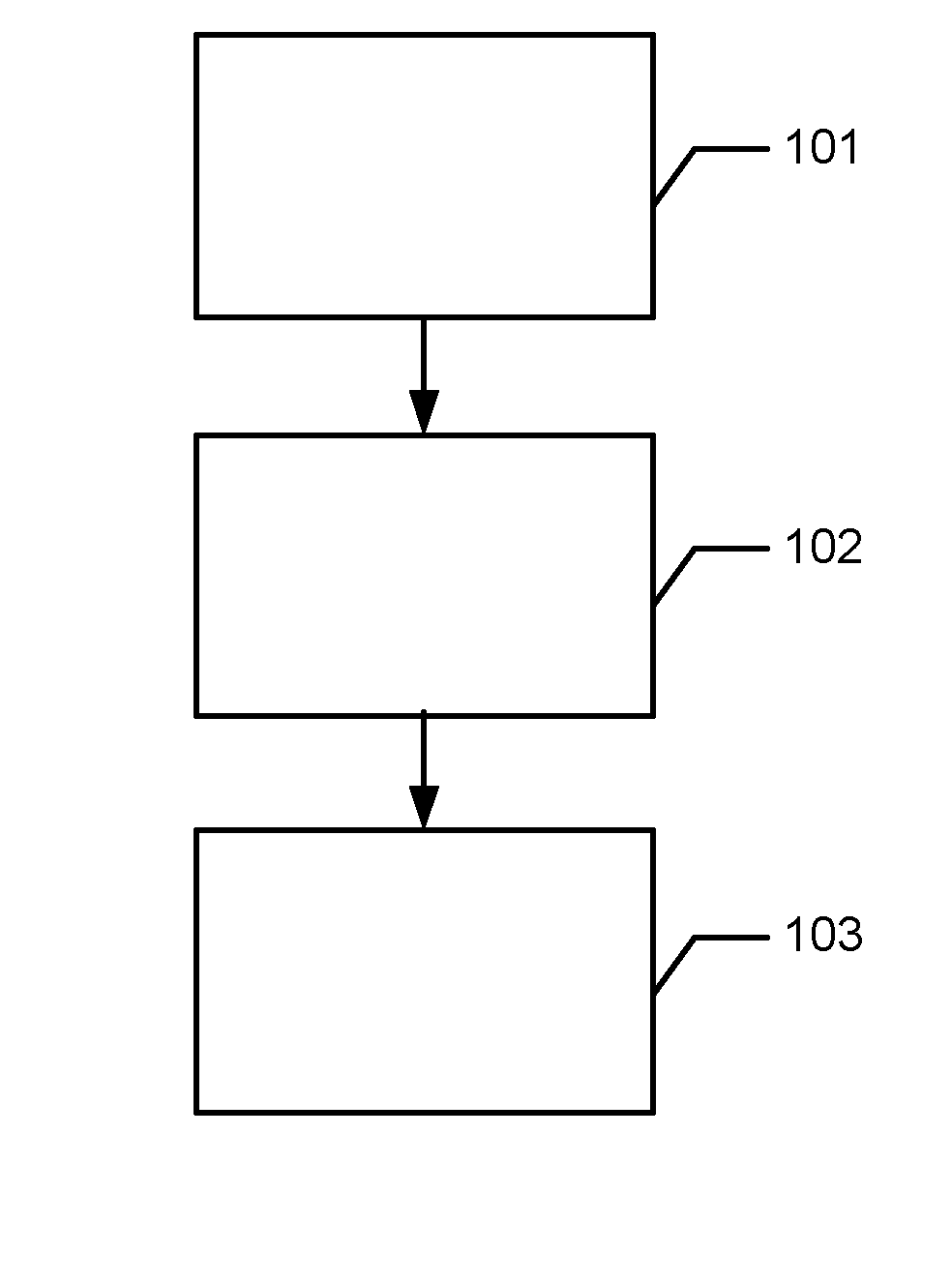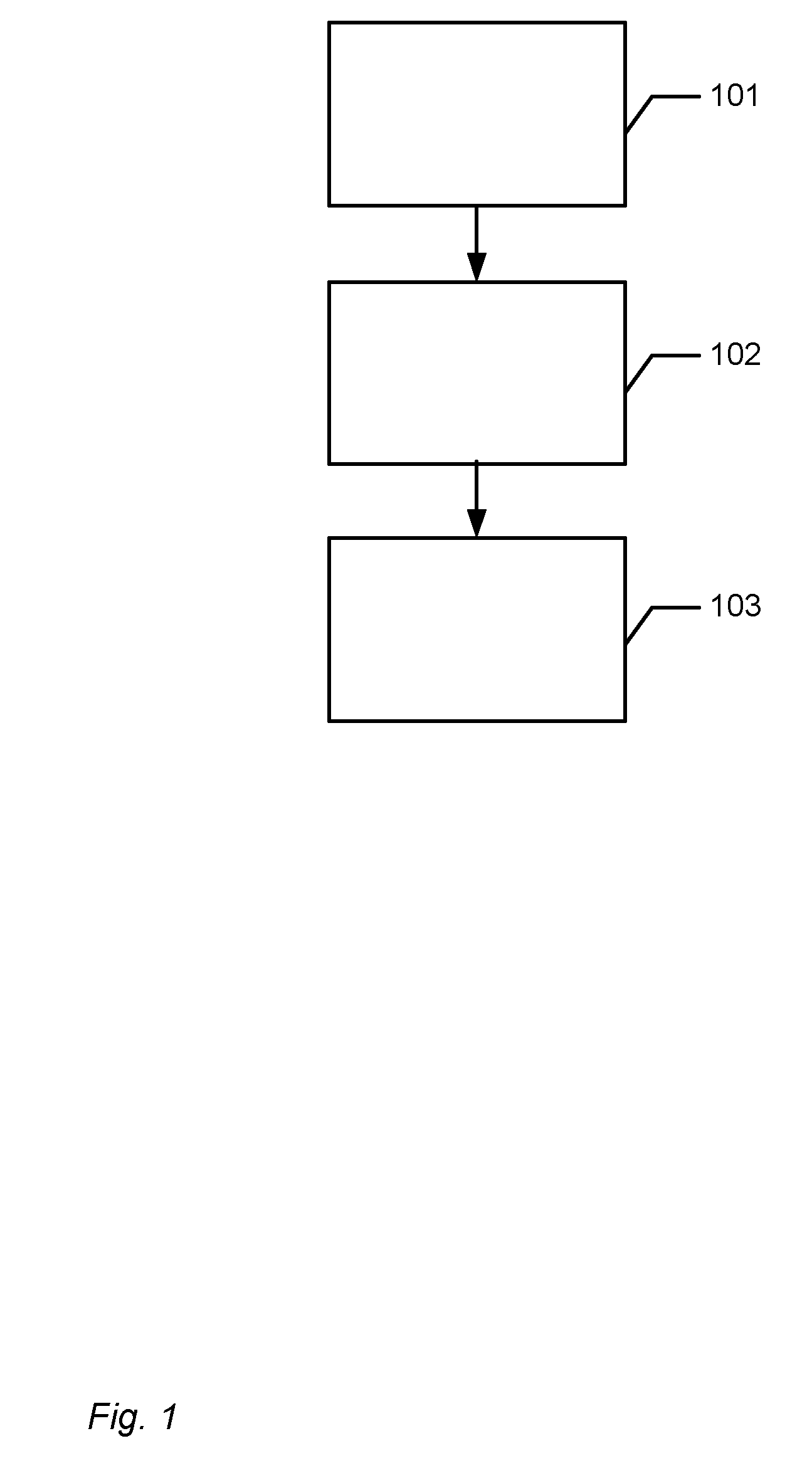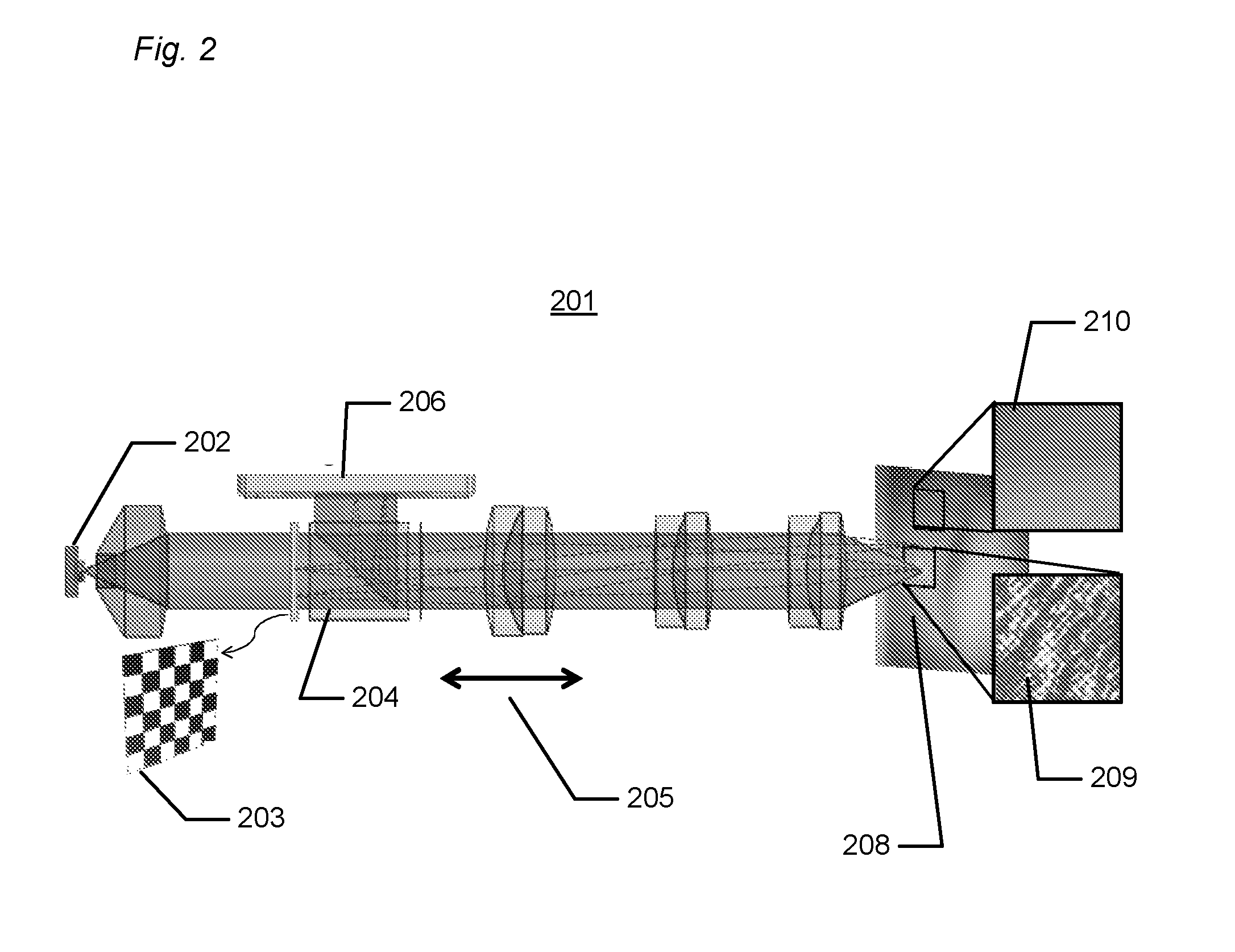Motion blur compensation
- Summary
- Abstract
- Description
- Claims
- Application Information
AI Technical Summary
Benefits of technology
Problems solved by technology
Method used
Image
Examples
Embodiment Construction
[0231]In the following description, reference is made to the accompanying figures, which show by way of illustration how the invention may be practiced.
[0232]FIG. 1 shows a flowchart of a method for compensating for motion blur when performing a 3D scanning of at least a part of an object by means of a 3D scanner.
[0233]The motion blur occurs because the scanner and the object are moved relative to each other while the scanning is performed. The motion blur compensation comprises that:
[0234]In step 101 it is determined whether there is a relative motion between the scanner and the object during the acquisition of the sequence of focus plane images.
[0235]In step 102 a motion compensation based on the determined motion is performed, if a relative motion is determined.
[0236]In step 103 a 3D surface is generated from the sequence of focus plane images.
[0237]In some cases, a first 3D surface has been generated prior to steps 101-103 and the motion compensation in step 102 and / or the gener...
PUM
 Login to View More
Login to View More Abstract
Description
Claims
Application Information
 Login to View More
Login to View More - R&D
- Intellectual Property
- Life Sciences
- Materials
- Tech Scout
- Unparalleled Data Quality
- Higher Quality Content
- 60% Fewer Hallucinations
Browse by: Latest US Patents, China's latest patents, Technical Efficacy Thesaurus, Application Domain, Technology Topic, Popular Technical Reports.
© 2025 PatSnap. All rights reserved.Legal|Privacy policy|Modern Slavery Act Transparency Statement|Sitemap|About US| Contact US: help@patsnap.com



